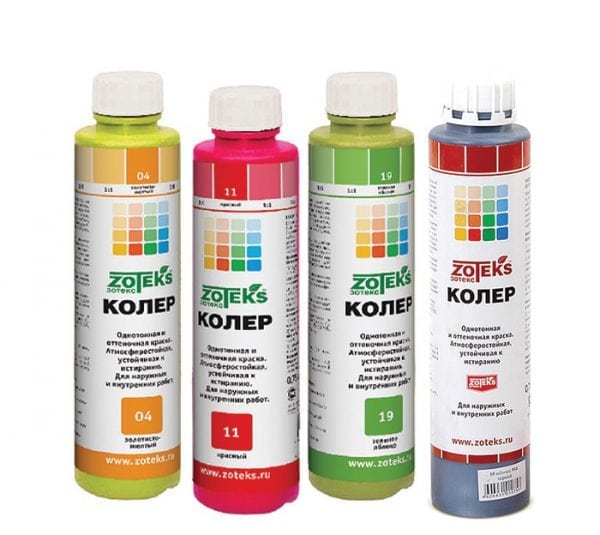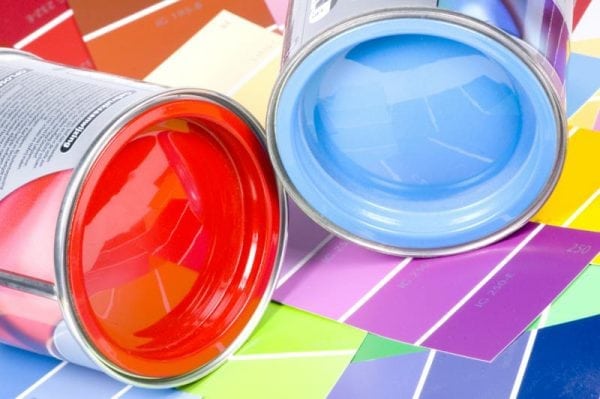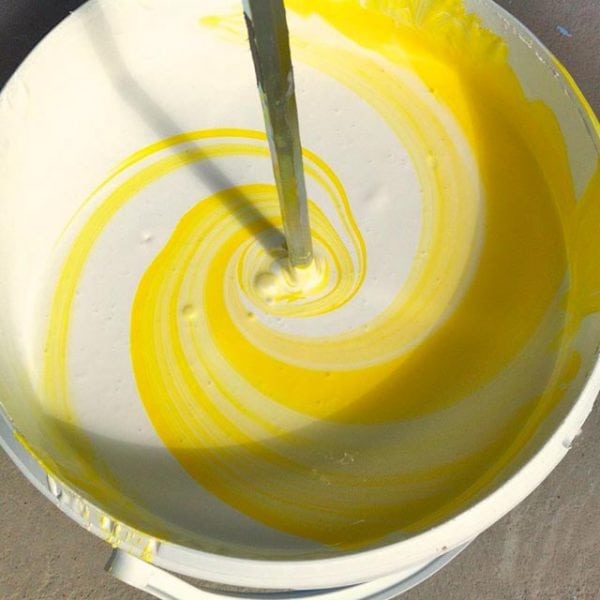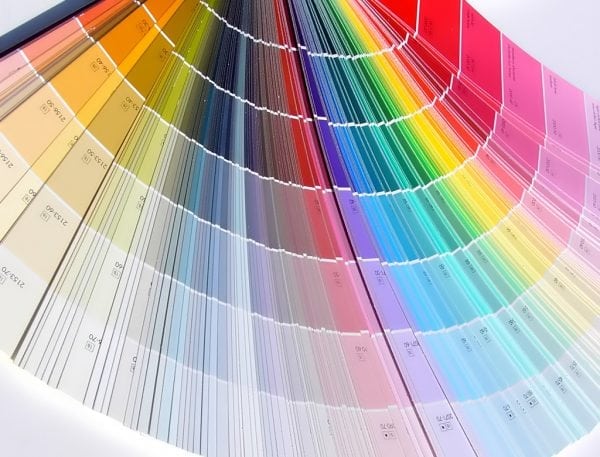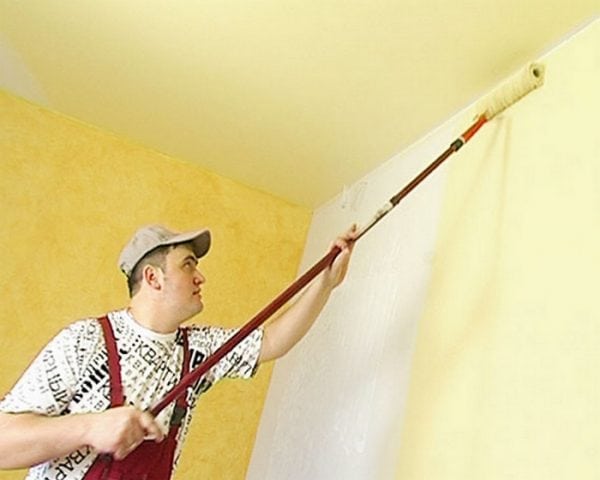Tinting of the paint is a mixing, dilution of the paint material in order to obtain the color tone planned by the design project. To obtain the desired shade, you can use the services of companies specializing in the sale of paints, or you can perform all the procedures yourself.
- Tinting systems
- Manual and computer mixing
- How to paint the walls with color
- Take care of the facade
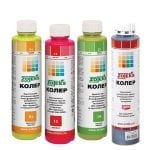
Specialists highlight several cases in which it is necessary to tint the surface:
- selection of a shade according to the color scheme of the interior;
- slight defects in the initial layer are present;
- errors in calculating the volume of paint and the lack of previously used color;
- interior decoration using several shades of one or more colors.
Summarizing, we can say that tinting allows you to confine yourself to cosmetic repairs, and not to produce complex and voluminous painting work.
to contents ↑Tinting systems
To choose the right tone and, accordingly, achieve a perfectly even stain, it is recommended to use tinting mixtures. They are a mixture of the base paint (usually white) and the coloring composition - color. The latter are characterized by a contrasting, often saturated tone in comparison with what is used in the basis.
Colerant pigments are divided into two types by origin:
- organic
- inorganic.
Pigments of the first type are a gamut of bright colors. It should be remembered that the paints obtained on their basis over time begin to lose brightness and saturation under the influence of direct sunlight. Therefore, pigments of organic origin are not the best choice for facade paint.
Inorganic type pigments are more resistant to aggressive factors from the outside, including burnout. However, such a color for paint has an extremely narrow range of shades.
Colorants are released in three states:
- paint;
- paste;
- dry composition.
The composition of the pastes includes dispersing resins, and a binder may be absent.
According to the spectrum of application, pastes are universal - they are combined with any types of paints and varnishes (alkyd enamels, water-based compounds and others), as well as highly specialized.
The advantage of pastes is in ease of use, as well as the ability to make adjustments to the shade as you mix. However, the disadvantage is the high probability that the color intensity of the color paste will be uneven.
The composition of the color paint contains the same components as in the paintwork material. This should be considered when selecting. For example, if you plan to use water-based paint, then the color should be chosen identical in composition. Combining white paint and this kind of pigment, you can get any color. The best combination can be found in a special tinting table. You can change the saturation of the tone in the direction of brightness by applying the colorant in undiluted, pure form.
Dry or loose pigments are inexpensive. But against the background of this, they have several drawbacks:
- limited choice of colors;
- the shade is difficult to adjust due to the undesirability of adding to the finished paint.
Manual and computer mixing
You can tint the paint in two ways:
- computer;
- manual.
Tinting at home requires the prior purchase of a base paint, as well as a set of colorant. Pigment is added immediately before dyeing begins. Proportions are selected according to the requirements of the instruction. DIY tinting has a number of advantages:
- the opportunity to save a significant amount of money;
- the procedure can be carried out directly at the repair site;
- the ability to create exclusive colors that do not have industrial analogues.
At the same time, the process carried out at home has one drawback: it is almost impossible to reproduce the resulting tone.
Computer tinting is controlled by a special program. The operator selects the colors according to the requirements, and the program itself determines the proportions and then gives the finished mixture.
Computer tinting has such obvious advantages:
- the procedure takes much less time;
- the desired colors can be easily reproduced repeatedly (just keep the tone in the program memory);
- wide palette of colors.
The equipment on which the mixing is carried out can be found in construction-related stores.
In general, the list of equipment that is used for color mixing, as follows:
- A large stand with booklets, where the table of tones is located, grouped, as a rule, by groups of interiors.
- Fan of flowers. In fact, this is the same table that is presented in the booklets of the stand, only in a separate casing. It is advisable to use such equipment in order to select colors directly on the object.
- Computer color machine - used to select paint according to a given sample.
- Pigment dispenser. This is manual equipment. It is a drum with stainless steel cans. Pigment mixing is provided by the engine.
It should be remembered that the tinting of paint using a machine method is not feasible directly on the object. In addition, the selection of colors is very limited to those that the table offers. To get some kind of complex shade does not work, no matter what modern and advanced equipment is used.
to contents ↑How to paint the walls with color
Today, there are a lot of methods for decorating wall surfaces. Pigmented interior paint is gaining more and more fans. It should be remembered that this process will reveal all the flaws and roughnesses of the wall surface. Careful preparation, which includes the application of putty and primer, helps to avoid this.
The application of any paintwork material should only begin after the primer is completely dry. The primer should be selected one that is suitable in chemical composition to the main paint.
Coloring the walls with color begins with the preparation of the main components - paint and pigment. You will also need a bucket covered with a layer of enamel or made of plastic. Water-based paint is poured into the container and mixed with a construction mixer until the consistency of milk. Separately, 100 g of a water-based emulsion paint and varnish material is mixed with color and is gradually, in small portions, introduced into the main paint.
When mixed, the surface of the coloring solution may become foamy. It should be allowed to stand before starting painting. In this case, the layer will lie correctly and accurately.
to contents ↑Take care of the facade
If earlier the external walls of houses were painted in one color, which was offered by construction stores, today the owners are trying to make a difference. Therefore, facade paint with the addition of color is gaining great popularity.
Kohler is nothing more than enamels with a rich, vibrant tone. They are used for a wide range of paints: alkyd, dispersion, water-based.Very often, colors are applied in a pure, undiluted form. This, for example, allows you to highlight individual elements of the facade. Harmoniously pick up tones allows a special fan table.
When choosing a color palette of facade paint, two scales are used - they can be found in the tables that are offered by color manufacturers.
it RAL including 210 shades, and NCS with 1950 colors. Colors are mixed with nitro enamels, water-based enamels, and other paints and varnishes.
As a rule, the facades have a large area, so it is better to choose a solution for painting not by hand, but by machine. Desired tones can be selected using the table. Manually preparing in large quantities the same tone is very difficult.
Painted facades give the house an attractive appearance, protect it from negative environmental factors. Adding colorings to the paint increases the brightness of materials that have a water base.
Tinting colors is the best way to realize design ideas. The resulting solutions are used for internal and external work. Pigments are added even to spray paint. Color and paint should be the same manufacturer - this is a guarantee of high quality staining.

